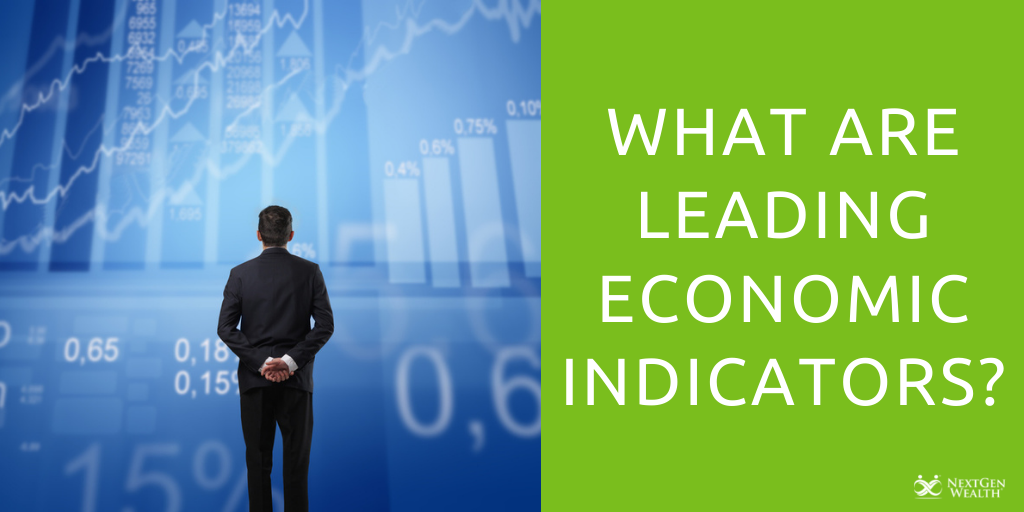What are Leading Economic Indicators?
Ever wish you could look into the future to get a glimpse of what certain markets will look like five or 10 years from now? This is especially helpful if we’re working on a financial plan or plan to invest money in up-and-coming new markets. 
If only we could know what the state of the economy will be before it actually happens. You can know more with the leading economic indicators. This article will answer what are the leading economic indicators, and how to use them.
What are Leading Economic Indicators?
Leading economic indicators are statistics provided by the government and other organizations that provide insight into the health of the economy. These indicators give us a heads up into business cycle stages and the status of consumers within an economy. They provide overall communication about the economy.
What is the Importance of Leading Economic Indicators?
Leading economic indicators lead or appear before broader changes in the economy and help us determine what economic changes are on the way. Investors pay the most attention to leading economic indicators because they predict where prices may be headed.
These indicators can help indicate short-term changes that will be taking place within the economy. This provides an inside glance into the economy, which helps big investors determine how to invest their money.
These indicators are also important to you as a consumer for the same reason as investors. When it comes to your finances and your planning, you want to know you’re making smart decisions and that it won’t come back to bite you later.
What are Leading Indicators
This article will cover nine of the top leading indicators and how they affect the economy. They are:
The Yield Curve
The treasury yield curve is extremely important to the state of the economy and one of the most important indicators to many people. The yield curve predicted the last eight recessions our country faced: 1970, 1973, 1980. 1990, 2001, 2008, and 2020.
The yield curve shows the return on short-term treasury bills compared to long-term treasury notes and bonds. When the yield curve is normal, returns on short-term notes are lower than the longer-term bonds. This is important because investors need a higher yield to invest their money for longer.
Likewise, the yield curve inverts when the short-term treasury bills and notes offer a higher yield than longer-term bonds. This implies a recession is impending because if investors are willing to accept a lower return for the long-term bonds, this means they are uncertain about the near future.
The yield curve also lets us know if interest rates are rising or falling. Low-interest rates mean loans will not be as expensive.
This ultimately means consumers and businesses will be able to afford to take out loans for expansions, to purchase things they need, etc. Higher interest rates make it harder to take out loans because they’re more expensive, and consumers will purchase less, meaning the economy is slowing down.
The Stock Market
The stock market helps give us a glimpse of what direction the economy is headed. That’s because the market is based on what major companies are expected to earn. When earnings are going up that indicates the economy is doing well.
However, the stock market is vulnerable and can be manipulated easily. So earnings estimates are not always accurate. The market can also give way to “bubbles,” which may provide false positives when it comes to the direction of the market.
When investors choose to ignore some of the underlying economic indicators that are right in front of them, they create market bubbles. This is what happened in 2008 when the market crashed. That was a perfect storm for a market correction which resulted in big, high-interest loans to people who couldn’t afford them and credit defaults in the housing market.
Durable Goods Report
The first thing big businesses do when they have confidence in the state of the economy is purchase new, expensive equipment. They replace old equipment and machines that haven’t been running properly with new ones in anticipation of higher demand.
They want to be ready to meet production. When the economy is not doing well, they delay those big-ticket purchases and continue to use the old machinery and equipment even though it’s not running as well.
Order for durable goods declined in January 2008, just a few months ahead of the 2008 recession, and again in October 2018, months ahead of the 2020 recession.
Manufacturing Activity
Manufacturing activity influences the gross domestic product (GDP), which suggests demand for consumer goods. This also boosts the employment rate since the need to manufacture more goods requires people resources.
If goods are being made this is usually a good thing. However, not all goods produced end up in the hands of the consumer. They may be in wholesale or retailer inventory for longer than expected.
This, in turn, increases the cost incurred for holding the products. So, when looking at this indicator it’s important to also look at the retail sales data; otherwise, the manufacturing activity could be misleading.
Inventory Levels
High inventory levels can have a negative and a positive outlook. For it to reflect a positive outlook, it would mean that businesses have intentionally bulked up the inventory to meet increased consumer demand that would happen in the imminent months ahead
This would be a good thing because businesses will meet the demand, and increase their profit. This is extremely good for the economy.
For it to reflect a negative outlook, it would mean that company supply has exceeded demand. It costs companies money to have inventory just sitting not being sold and indicates that sales are low and consumer confidence is also down. This may indicate the economy is not doing well or on the rise for not doing well in the coming months.
Retail Sales
Strong retail sales increase GDP, which ensures high employment because more people are needed to help manufacture and sell products. People are working and people are buying; this is good for consumer confidence and the economy.
On the other hand, weak retail sales suggest the exact opposite. The other thing is that even when sales are high, there’s no metric to determine how people are paying for their products. If most people are depending on high-interest yielding credit cards for their purchases, it could signal an impending recession due to high debt.
Building Permits
A high number of building permits suggests a busy time for the construction industry. This means there will be more jobs and the GDP will increase. On the other hand, when you have more houses than people are willing to purchase, house prices will likely decline because the demand is not there. This will, in turn, affect the economy.
Housing Market
When it comes to the housing market, there are two things to pay attention to, housing values and changes in sales. When housing prices decline this suggests a few things: that the supply exceeds the demand, prices are not affordable, or housing prices are way too much and need to be corrected. A decline in housing:
- Decreases homeowner wealth
- Reduces the number of people needed to work in construction because there’s no demand for new homes. This, in turn, increases the rate of unemployment
- Reduces property taxes, which causes a decrease in government resources.
- Increases the likelihood of foreclosures as homeowners are not able to refinance their homes.
New Business Startups
The increase in the number of startup businesses is a good sign of economic well-being because they contribute significantly to the GDP. They introduce new ideas and products that stimulate growth, and they hire employees that contribute to the state of unemployment.
How To Use Leading Indicators
Leading indicators give a preview of what’s about to happen in the economy. Here are some ways you can determine what is happening through these indicators:
- Check the yield curve monthly. Because it can invert years before a recession even happens, it’s good to monitor it but compare it to other leading indicators before taking any action.
- Review the durable goods order report monthly. It varies month to month, so monitor this with other leading indicators.
- Take note if the stock market falls more than 20%. That means it’s a bear market which usually signals a recession is on the way.
- Keep an eye on what’s happening with manufacturing jobs. This is a monthly release in the Jobs Report by the Department of Labor.
- The building permits report is also a monthly report by the U.S. Census Bureau. A quick review of this will tell you how developers feel about the future of housing.
Conclusion
An indicator that helps us predict our economic status is a leading indicator. To stay ahead of oncoming crises, you can monitor the leading indicators to prepare yourself financially.
When it’s time to make those crucial financial decisions, it’s good to work with a financial advisor to put a financial plan in place. If you don’t have a plan, the status of the economy will lead you. Stay ahead of what’s going on and take control of your finances by having a plan.
At NexGen Wealth, we can help you with developing a financial plan that will get to your goals regardless of the economy. Contact us to get the conversation started.


